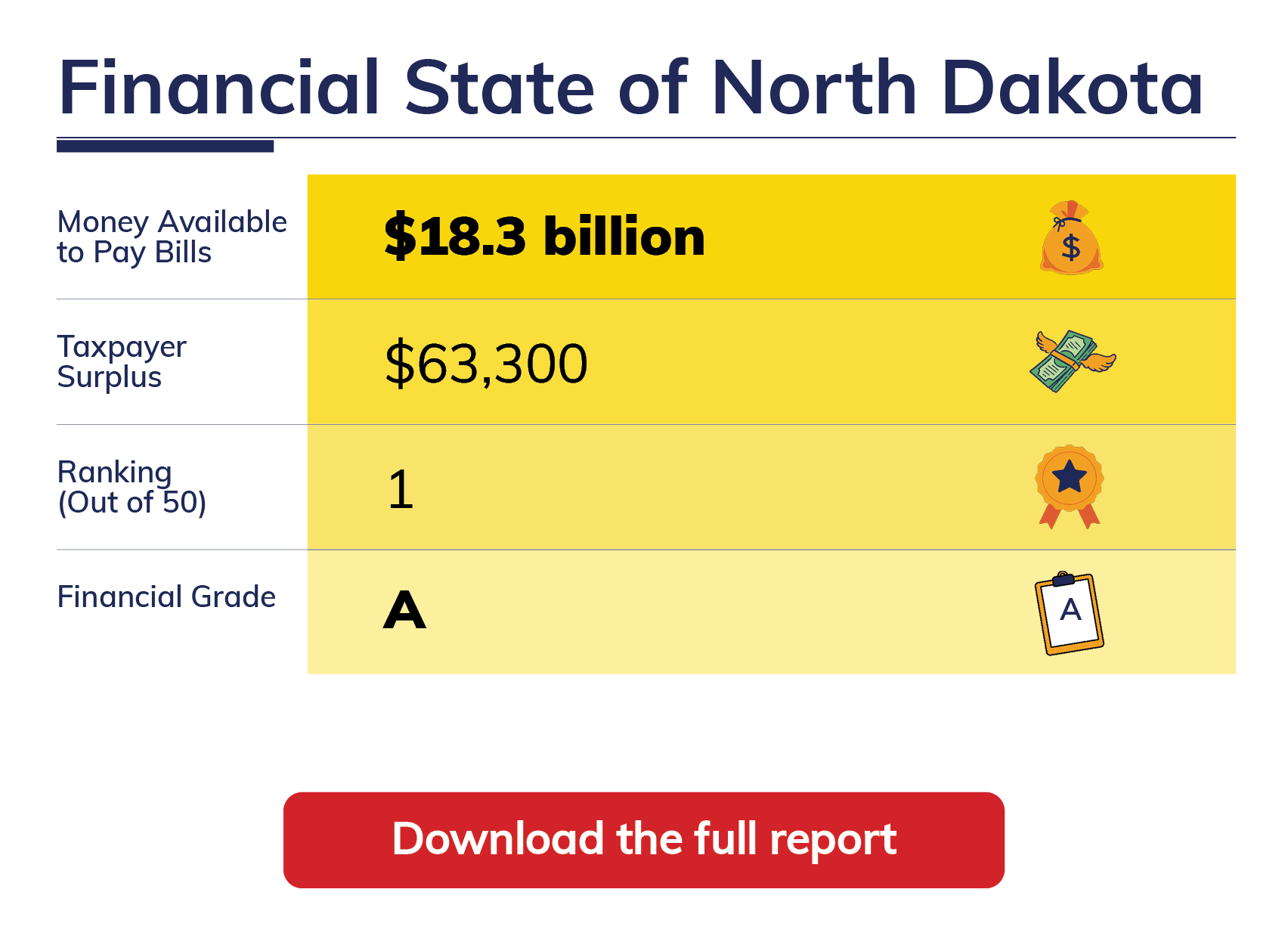North Dakota
| North Dakota owns more than it owes. |
| North Dakota has a $63,300 Taxpayer Surplus.™ |
| North Dakota is a Sunshine State with enough assets to cover its debt. |
| Elected officials have created a Taxpayer Surplus™, which is each taxpayer's share of money available after state bills have been paid. |
| TIA's Taxpayer Surplus™ measurement incorporates both assets and liabilities, not just pension debt. |
| North Dakota has $27.1 billion of assets available to pay the state's bills totaling $8.8 billion. |
| North Dakota has $18.3 billion available after bills have been paid, which breaks down to $63,300 per taxpayer. |
| North Dakota's reported net position is understated by $136.1 million, largely because the state delays recognizing gains resulting from decreases in retirement liabilities. |
| The state's financial report was released 166 days after its fiscal year end, which is considered timely according to the 180 day standard. |
Prior Years' TIA Reports
2023 Financial State of North Dakota
2022 Financial State of North Dakota
2021 Financial State of North Dakota
2020 Financial State of North Dakota
2019 Financial State of North Dakota
2018 Financial State of North Dakota
2017 Financial State of North Dakota
2016 Financial State of North Dakota
2015 Financial State of North Dakota
2014 Financial State of North Dakota
2013 Financial State of North Dakota
2012 Financial State of North Dakota
2011 Financial State of North Dakota
Other Resources
North Dakota Annual Comprehensive Financial Reports
Publishing Entity: Office of Management and Budget


